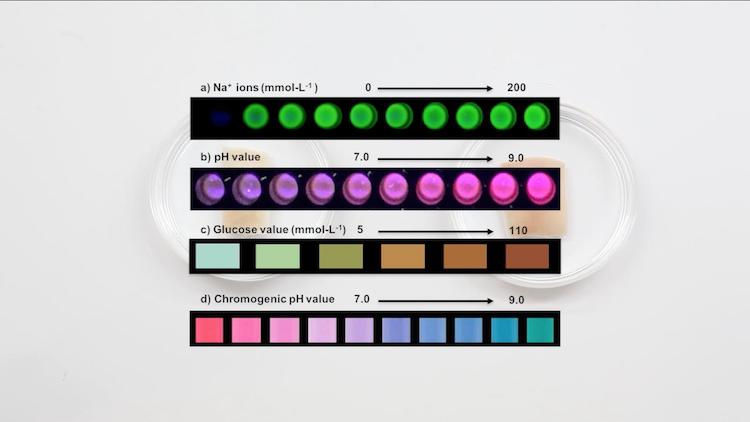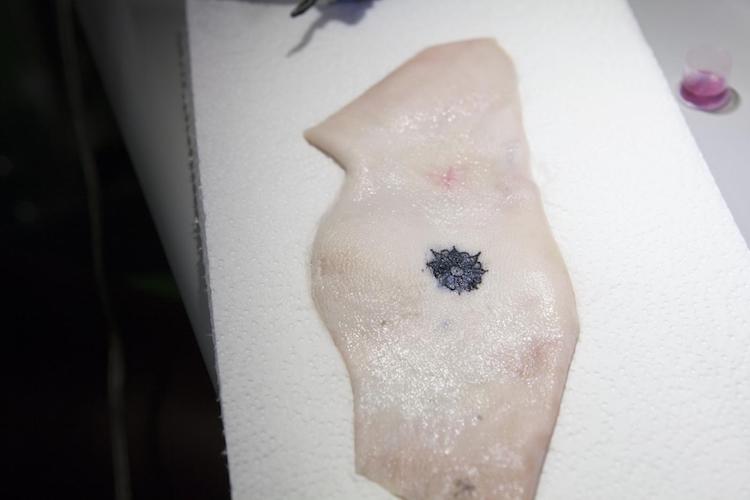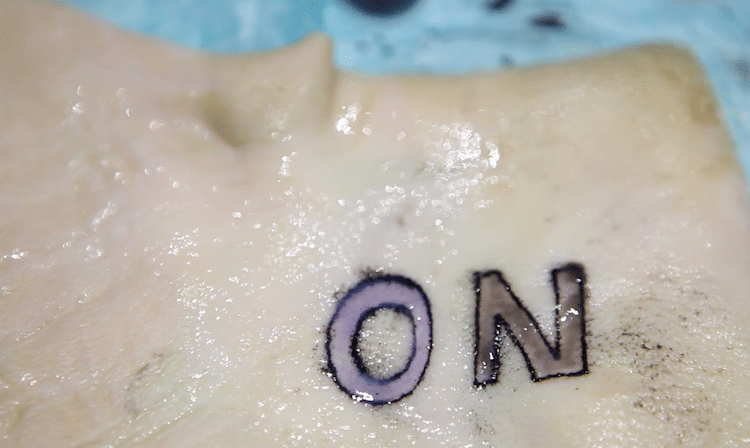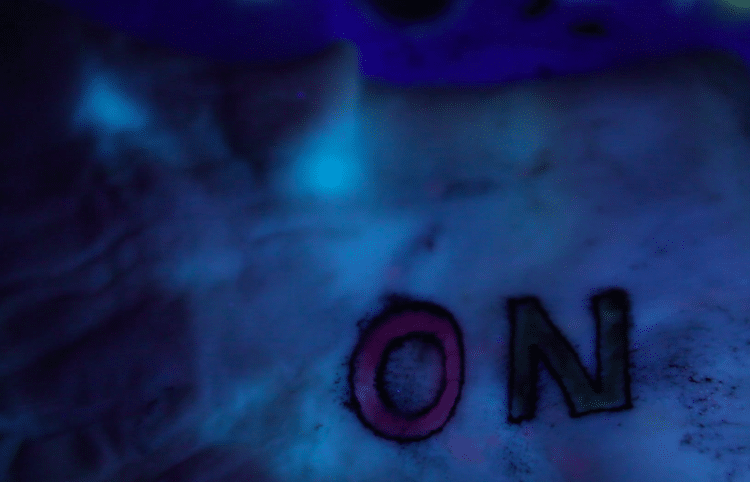
What if a tattoo could become an interactive piece of art that helped tell us something about our health? A group of researchers at the MIT Media Lab, in collaboration with Harvard Medical School, are developing tattoo inks infused with biosensors.
Once on the skin, the ink changes color depending on different information—glucose, pH, and sodium. Changes in pH cause the special ink to shift from purple to pink, while glucose levels move between blue and brown. And if you ever wanted to glow in the dark, a sodium and a second pH sensor become increasingly fluorescent under UV light.
The collective group, called DermalAbyss, is looking at more than just a creative way to advance the art of tattoos. Medical diagnostics and health monitoring are real possibilities that would allow us to quickly and effectively act to keep ourselves healthy. For instance, instead of daily finger pricks to check sugar levels, the glucose sensor could aid diabetics in keeping things in balance. Instead, the sodium sensor is a quick way to understand levels of dehydration.
As they continue their tests, one thing is certain—biosensors are moving closer to becoming a real part of our daily lives.


PH sensing: low value

PH sensing: high value


This video explains how biosensor tattoos change color and can help monitor your health.
DermalAbyss: Website
h/t: [Co.Design]
All images via DermalAbyss.
Related Articles:
World’s “Mattest and Flattest” Black Paint is Now Available for All Worldwide
Spectacular Visualizations of Brain Scans Enhanced with 1,750 Pieces of Gold Leaf
Color-Changing Hair Dye Reacts to Its Surroundings Like a Mood Ring
